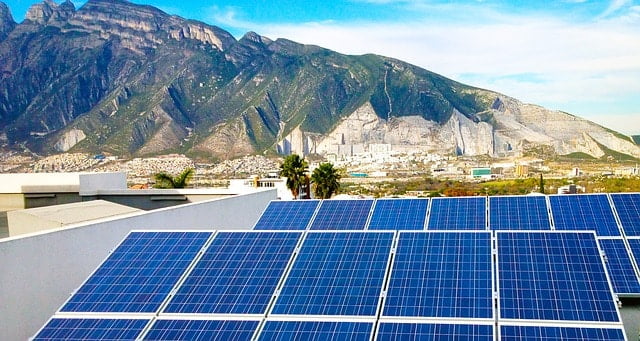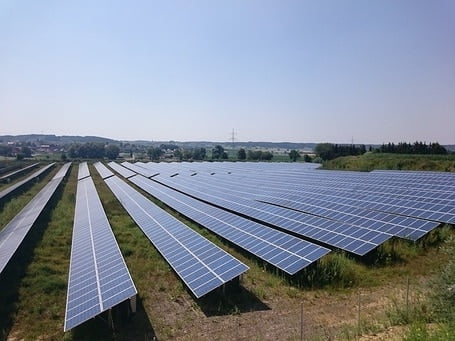Solar power involves converting the sunlight’s energy into usable electricity for powering devices, homes, and businesses. So; if you’re interested in owning a solar-powered home, understand the amazing benefits and potential methods for powering your home using solar power.
Here are 3 ways to create a solar-powered home:
Table of Contents
Reasons to Create a Solar-Powered Home
Creating a solar-powered home provides economical and environmental advantages.
Solar-powered homes offer numerous economical benefits, including:
- Increasing earnings: Firstly; solar power can potentially generate almost $1.3 trillion for the American economy according to IREA.
- Creating jobs: Secondly; provides more jobs than the fossil fuels industry, especially for struggling farmers and landowners. Specifically, solar power employs four times more Americans than in the coal industry.
- Saving money: Thirdly; users of solar power receive lower electric expenses, tax incentives, and increased property value.
Solar-powered homes also positively impact the environment. Traditional forms of electricity, primarily fossil fuels, emit carbon dioxide, and other harmful gases during production, releasing pollutants, and increasing global warming. Additionally, fossil fuels, such as coal and natural gas, are finite resources, meaning the supply will eventually diminish. Solar power offers a clean, renewable energy alternative to effectively improve air quality by decreasing greenhouse gas emissions.
Understand the economical and environmental reasons for creating a solar-powered home.
Solar-Powered Devices
Solar-powered gadgets and devices are available for your home and daily use. Search for solar-powered devices to adopt purposeful changes capable of producing a meaningful difference.
Minor Devices
Discover minor solar-powered devices to improve your home and habits.
Rechargeable personal electronic devices are regularly overused, meaning lots of energy is dedicated to these devices. Purchase solar-powered phone and tablet chargers as a simple and inexpensive method for incorporating solar power into your daily life.
Additionally, outdoor lights require ample energy. Solar-powered outdoor lights are excellent options, which generate and store electricity during the day to provide lighting at night. Consider choosing solar-powered outdoor lights instead of your landscaping.
Major Appliances
Find solar-powered major appliances to drastically alter your home’s energy usage. Major appliances, including refrigerators, HVAC systems, washers, and dryers, are available for adding solar power little by little to your home. For example, solar water heaters are popular alternatives for gas- or electric-powered options by heating water using solar panels.
Residential Solar Power Systems
Residential solar power systems provide solar power for your entire home.
Solar power systems contain numerous components, including solar panels, an inverter, and racking. Solar panels are responsible for generating DC electricity using photovoltaic technology and sunlight. An inverter converts DC electricity into AC electricity, which is the type of electricity necessary for powering your home. Lastly, racking mounts your solar panels to your roof.
Determine a solar power system for your home by calculating the kilowatt-hours of power required for covering your home’s energy usage. Homeowners generally need 28 to 34 solar panels. Solar power systems cost anywhere between $10,000 and $40,000 for equipment and installation. Locate a specialty contractor for choosing and installing the perfect solar power system for your home.
Residential solar power systems offer numerous benefits. Primarily, solar power system owners earn monthly savings on electric expenses, receive tax incentives for covering installation costs, and increase their home’s value substantially.
Community Solar Opportunities
Community solar is a popular alternative for powering your entire home using solar power, but what is community solar?
It refers to a group of people sharing electricity produced using solar energy. Other terms for community solar include energy sharing, shared solar, and solar farms and gardens.
Shared solar projects are funded and operated by third parties, typically private businesses, government organizations, or utility companies, who elect to install solar panels in a certain area. Electricity generated at the solar farm is delivered to the power grid and distributed by the utility company to homes and businesses. Subscribe to the community of solar projects as simple as finding a local option of the services.

Advantages of community solar include receiving a guaranteed discount of 10% on electricity bills, bypassing pricey installation costs and maintenance fees, and experiencing an easy enrollment process. It’s also great for renters.
Understand the 3 simple ways of creating a solar-powered home to earn the economical and environmental benefits.


